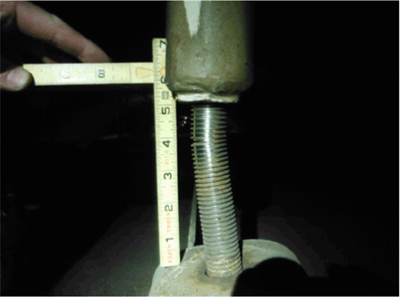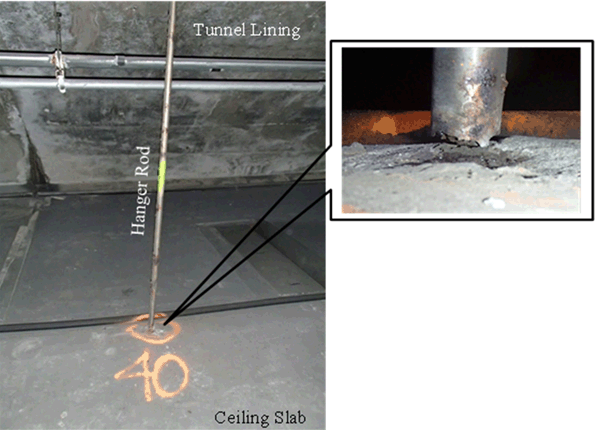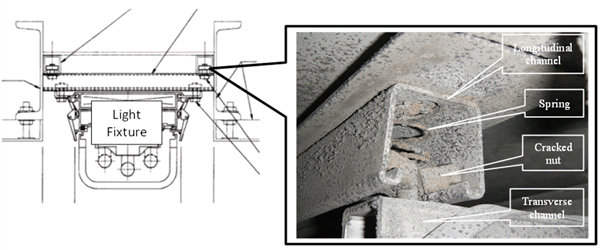Inspection of Overhead Stainless Steel Structural Elements in Tunnels
From: Bergeson, William (FHWA)
Sent: Thursday, February 04, 2016 5:18 PM
To: BRIDGE_DIVISION; Pakhchanian, Hratch (FHWA)
Cc: HIBS_30; Burrows, Shay (FHWA); Ahmad, Anwar (FHWA); Kozy, Brian (FHWA); Ocel, Justin (FHWA)
Subject: INFORMATION - INSPECTION OF OVERHEAD STAINLESS STEEL STRUCTURAL ELEMENTS IN TUNNELS
Bridge Engineers,
There have been a few recent incidents that have caused stainless steel elements to fail prematurely due to the harsh tunnel environment where corrosion and deterioration occur at accelerated rates. Overhead elements are a safety concern if they fail. As part of the national tunnel inspection program, please discuss this message with your State and federal partners, as appropriate. In association with AASHTO T-20, the FHWA will be evaluating the need to develop research products to further assist tunnel owners with this problem. Additional information will be communicated to you at a later time. Justin Ocel of our Turner Fairbank Highway Research Center has summarized the findings below.
BACKGROUND:
Stainless alloys are commonly chosen for their application in highway tunnels because of their enhanced resistance to corrosion, however, these alloys can still be fallible to the effects of corrosion; this is especially true if the metal properties are out-of-tolerance with the applicable design standard. Stainless alloys should be checked for cracking and for pitting corrosion since these metals may not be corrosion-resistant for the entire service life of the tunnel.
There have been two known highway tunnel cases where stainless steel hanger rods, that supported overhead ceiling elements, were observed to be pitted and/or fractured. These failures were attributable to stress corrosion cracking (SCC) with one instance occurring after ~24 years of service (Figure 1) and the other occurring after ~60 years of service (Figure 2). SCC is a fracture phenomenon that forms over time in the presence of what can be relatively low stress within a highly corrosive environment. In particular, the austenitic grades of stainless steels (i.e. 300 series alloys) are considered susceptible to SCC in the presence of chlorides, which can be exacerbated by pitting corrosion. At this time, there is no known threshold limit in terms of stress level or chlorine concentration that has been found to prevent SCC; and at this time, any stainless alloy should be considered susceptible to such degradation processes.
There has also been one known tunnel case where numerous stainless steel mounting nuts were observed to be cracked in the overhead mounting frames that support light fixtures (Figure 3). The failed nuts were found to have a non-conforming chemical composition and excessive amounts of carbon. The nuts were manufactured using a sintered metal powder process rather than a cast material, which created metal elements with a porous matrix. The coupling of excessive carbon and high porosity lead to an interconnected matrix that was susceptible to corrosion despite it being formed from a parent stainless steel metal thought to be highly resistant to corrosion.

Figure 1

Figure 2

Figure 3
RECOMMENDATION:
It is recommended that stainless steel structural elements, used in applications overhead of traffic, be carefully checked during initial and routine inspections due to safety concerns. The inspection team should:
- Implement appropriate inspection techniques to identify deficiencies in the stainless steel elements that support overhead elements in the tunnel.
- Identify any patches of corrosion on stainless steel elements used to support overhead elements in the tunnel.
- Follow up with an in-depth or special inspection, as necessary, to determine the extent of the problem and to monitor for any changes.
Please feel free to contact me if you would like further information or assistance with this issue.

